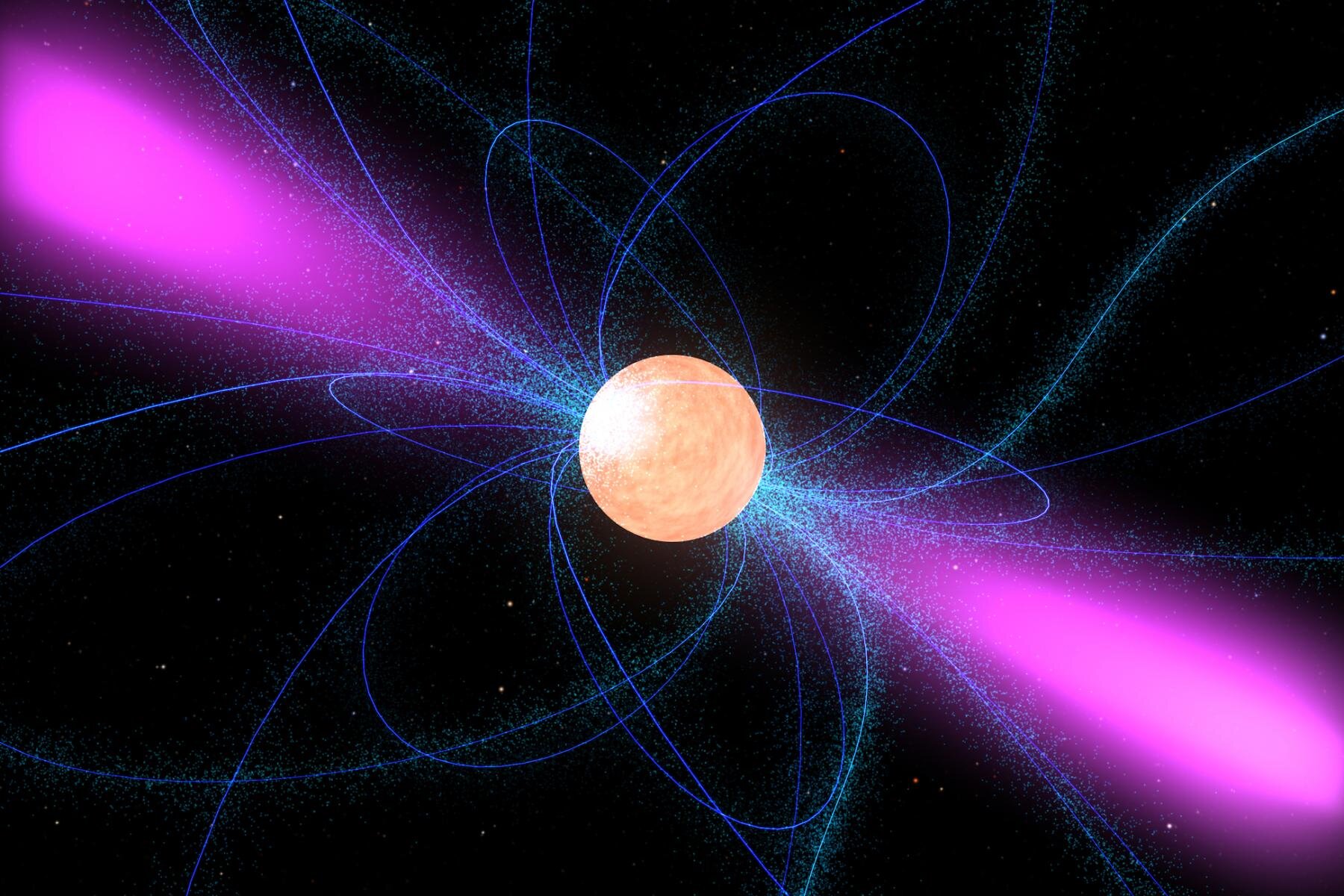Unraveling the Mystery of Dark Matter: How Axions Around Neutron Stars Could Be the Key

For decades, scientists have been trying to understand dark matter, an enigmatic substance that seems to make up roughly 85% of the universe’s matter but doesn’t emit or interact with light in a way we can easily observe. Now, a breakthrough study led by a team of physicists from the universities of Amsterdam, Princeton, and Oxford brings us closer to finding answers. They propose that lightweight, hypothetical particles known as axions may be present in large clouds around neutron stars, potentially making these elusive particles easier to detect. Their findings, published in Physical Review X, could help unravel one of the biggest mysteries in modern physics.
What Are Axions, and Why Do They Matter?
When we think of tiny particles, familiar names like protons, neutrons, and electrons come to mind. But axions? Not so much. That’s because they remain purely hypothetical; no one has definitively detected them yet. The idea of axions was first introduced back in the 1970s as a way to solve a problem in the physics of neutrons. The name even comes from a brand of soap, symbolizing their theoretical role in “cleaning up” some of the inconsistencies in our understanding.
Although they started as a potential solution for a specific problem, axions have since gained attention as a leading candidate for dark matter—a mysterious form of matter inferred only from its gravitational effects on visible matter, such as stars and galaxies. Despite overwhelming evidence suggesting that dark matter exists, its true nature remains elusive. Physicists believe that axions could help solve this puzzle because they are predicted to be incredibly light and interact very weakly with ordinary matter, making them hard to detect directly but perfect candidates for dark matter.
How Neutron Stars Can Help Uncover Axions
You might be wondering: if axions are so elusive, how do we go about finding them? This is where neutron stars come into play. Neutron stars are among the densest objects in the universe, packing the mass of our Sun into a sphere just about 12 to 15 kilometers in diameter. Their extreme densities create highly intense environments, featuring magnetic fields billions of times stronger than anything we have on Earth. Such fields provide the perfect setting to search for axions.
Axions have a peculiar property: they can convert into photons—particles of light—when exposed to electric and magnetic fields, and vice versa. While this conversion is weak and difficult to detect in most environments, the intense magnetic fields around neutron stars could theoretically mass-produce axions, potentially forming large clouds of these particles near the stars.
What Makes Axion Clouds So Special?
In their previous research, the team focused on the axions that escape a neutron star, investigating how these particles might interact with light in a way that produces observable signals. This time, however, the spotlight is on the axions that get caught by the star’s immense gravitational pull. These axions would stick around, accumulating over millions of years to form dense clouds enveloping the neutron star.
So, what’s the big deal about these axion clouds? The researchers argue that if axions do indeed exist, these clouds should form around most neutron stars and could be 20 orders of magnitude denser than local dark matter in space. The density of these clouds could produce two distinct types of signals: a continuous emission of light over much of the neutron star’s lifetime and a burst of light when the star eventually runs out of fuel and stops radiating electromagnetic energy. Both of these signals, they suggest, could be picked up by our existing radio telescopes.
Why This Matters for the Search for Dark Matter
For scientists, it’s not enough for a theory to sound promising; it needs to lead to observable consequences. The idea that axion clouds around neutron stars could generate detectable signals provides just that—a concrete way to search for these particles. With the new findings, researchers now know what to look for, making the hunt for axion clouds much more feasible than before.
However, this is just the beginning. There's still a lot to figure out. For instance, one of the researchers is already working on understanding how axion clouds could impact the behavior of neutron stars. There’s also a need for more numerical modeling to precisely predict what signals to expect. Beyond individual neutron stars, many of these dense objects exist in binary systems—paired with other neutron stars or even black holes. Studying axion clouds in such complex systems could reveal even more about their nature and how they interact with their surroundings.
Looking Ahead: A New Frontier in Physics
The discovery of axion clouds would mark a significant leap forward in our understanding of dark matter and the universe as a whole. But as with many scientific breakthroughs, it will require a multidisciplinary approach. Researchers will need to bring together expertise from particle physics, astrophysics, plasma physics, and radio astronomy to piece together the puzzle. It’s an exciting time, as this research opens a new cross-disciplinary field with endless possibilities for discovery.
Story Source:
Materials provided by Universiteit van Amsterdam. The original text of this story is licensed under a Creative Commons License. Note: Content may be edited for style and length.
Journal Reference:
- Dion Noordhuis, Anirudh Prabhu, Christoph Weniger, Samuel J. Witte. Axion Clouds around Neutron Stars. Physical Review X, 2024; 14 (4) DOI: 10.1103/PhysRevX.14.041015

0 Comments